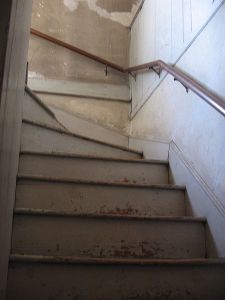If you have been reading these energy efficiency blogs, you may have noticed a pattern. Basement, attic, crawlspaces... Like a broken record these troublesome locations of the house keep coming up. Be sure to Seal the Ducts, especially in the basement, attic, and crawlspaces. Then add insulation, especially in the basement, attic and crawlspaces... Don't forget about sealing and insulating your pipes and ducts, especially... You guessed it!
The Home Energy Auditors from America's Best Energy Team will probably tell you something similar. And, before even beginning to read this, you had probably already guessed that you could save yourself money, time and energy by being more concerned with these areas. You're right. The tricky thing about these locations is their distance from the nucleus of the house. Basements and attics are often used as storage space rather than living space. Seasonal items such as clothes and decorations are shut away to collect dust for months at a time. These storage spaces are often cluttered and dimly lit, if at all. All of these factors make basements, attics, and crawlspaces easy to overlook. While it is easier to address the issues that you see every day, the fact that these places should be checked out first when assessing what needs maintenance, updating or replacing is ironic.
There is a pattern here involving our priorities and what we see, when in reality what we do not see is often causing the trouble. Like the crack between the wall and floor behind a stack of boxes in your basement that is so thin, only creepy crawlies and cold air seep in. Or the hole in the attic where a raccoon tried to nest last year. Take a little time and give your house a check-up.
Not everyone can afford to make the efficiency upgrades they want or need, but scheduling a Home Energy Audit with ABET will at least identify where the problems are and how they can be fixed. From there, America's Best Energy Team can assist you in finding a step-by-step path to the level of safety, comfort and efficiency you desire. If you are the resourceful type, you may want to try the good old DIY method, and buy some caulk, weather strips, or spray foam and fill in those energy drains yourself. Use your senses to locate where a draft is entering your house, and be sure to check the basement, attic and crawlspaces.If you don't catch on to the pattern, you may end up wearing a hat, gloves, and two pairs of socks INSIDE!
By Nick Ring.
Tags
Subscribe to NV Roofing's Blog




